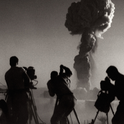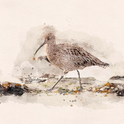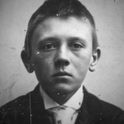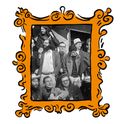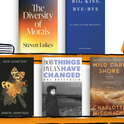(Granta, £16.99)
This, Robert Macfarlane's second book, is all about close focus. His first, Mountains of the Mind (2003), told stories of scale and danger, and was a hit with armchair mountaineers everywhere (the professionals, naturally, preferred to sneer). In The Wild Places, however, Macfarlane embarks upon a quieter but more urgent mission—to discover whether Ireland and Britain still harbour any tangled corners of what John Fowles called "old nature." By this, the late sage of Lyme presumably meant not just the Undercliff, where history and biology make a joyous noise, but any land untended by council or commission or concerted human touch.
Macfarlane is the poster boy (he is just 31, and handsome with it) for the recent upsurge in nature writing. At its academic end, this takes the form of Jonathan Bate's eco-critical re-readings of Austen and Hardy. At the other, it means those self-consciously retro wildlife posters given away by the Guardian. In between lie some serious—though surprisingly successful—commercial works which aim to reacquaint the average urban Briton with the exhilaration of a starlit night or a high spring tide. Some, like Richard Mabey's Nature Cure, even sing of the possibility that a reattachment to the rhythms of the natural world can heal the stricken soul.
This high cultural interest in nature writing echoes that moment over 200 years ago when Wordsworth and Coleridge tramped the Lake District and claimed its unwrecked grandeur as a salve for the grimy, ripped-up landscape of industrialising Britain. The irony, of course, was that their poetic effusions launched an extraordinary tourist boom in the area. Over the next few decades, hordes of soulful suburbanites descended on the lakes with their walking boots and sandwiches and proceeded to remake the landscape in their own dowdy image. The effect was repeated a hundred years later by the similarly ironic legacy of Beatrix Potter. Even her heartfelt conservationism and generous bequest to the National Trust could not prevent a sudden rash of Peter Rabbit tea rooms breaking out all over the headlands.

The book works better when Macfarlane searches for the wildness close to home, in places that are not so much hard to find as overlooked. Most affecting are those passages where, much as Iain Sinclair did in London Orbital (2002), he walks to the edge of a city and then keeps walking, finding in an unremarkable bit of scrubland the kind of transcendence that is supposed to be the preserve of remoter places. For instance, in a beech wood just south of Cambridge, Macfarlane climbs and climbs until he has outreached the ugly utilitarian skyline, and can sway himself into a kind of bliss. Elsewhere he is able to perform this same transforming magic on everyday found objects, unzipping a feather with the kind of wonderment you'd expect of a five year old.
Also to be savoured is the way that Macfarlane elegantly negotiates the various narrative templates on offer to him. He avoids the cliché of turning his geographical journey into a metaphor for some kind of spiritual quest, nor does he play that annoying trick of hinting at some thrilling emotional drama taking place offstage (the one teasing thing that made Mabey's Nature Cure such a frustrating read). Macfarlane's wife stays out of the picture, his baby daughter is mercifully silent. Companions are named, but we are never expected to know or like them. Only occasionally does a wise local guide loom up through the mist to provide a key bit of lore to turn Macfarlane's musings in the right direction. If there is any trauma in the story, it comes in the loss, three quarters of the way through, of Macfarlane's friend and mentor Roger Deakin, whose Wildwood was published posthumously earlier this year.
This refusal to use the usual pointing devices, however, means that Macfarlane's narrative at times loses shape. He carefully includes an epigraph from TS Eliot about how the point of exploring is to "arrive where we started/and know the place for the first time," as if to make it clear that waywardness and circularity are intended effects and not the result of any dereliction on his part. All the same, it is hard at times to know quite what Macfarlane wants us to do with his book. We cannot use it as a guide to wild places for, as he rightly implies, each person must find their own way there. We cannot rely upon it as a set of local histories or anthropologies, since the style is glancing and anecdotal and the formal sourcing non-existent. I suspect that we are expected to love and applaud the book for its lyrical, poetic prose, but this I cannot quite do. There is something too worked and wrought about the The Wild Places, as if someone had already got there first and started taking notes.
